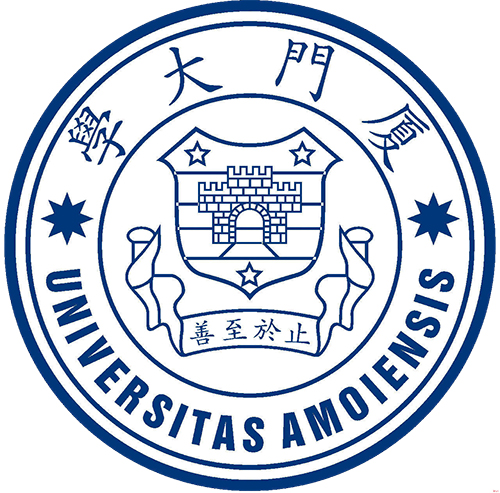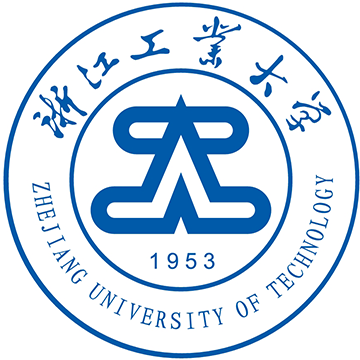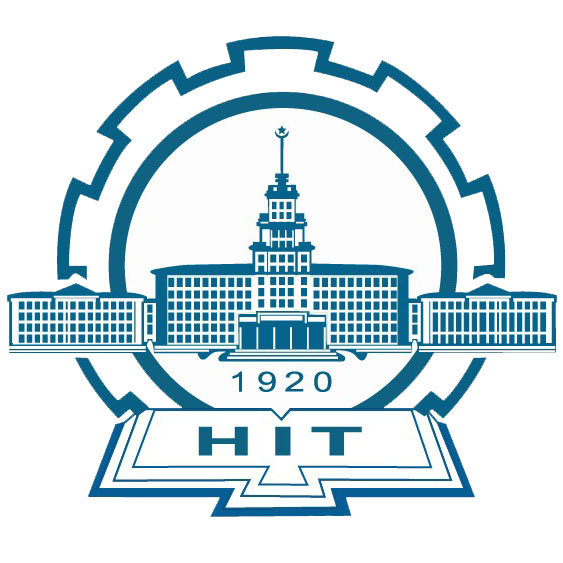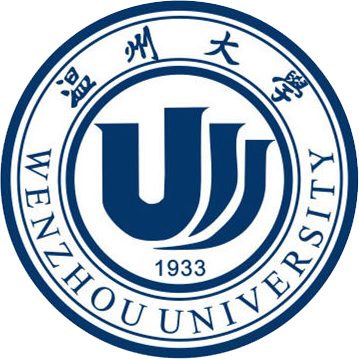
 Introduction
IntroductionEveryone that has been to Xiamen can’t help but marvel at the city’s beauty. Everyone that has studied at Xiamen University remembers this unforgettable experience.
Xiamen University was founded in 1921 by Tan Kah Kee, the well-known patriotic overseas Chinese leader. The English-Medium Economics enjoys prominent reputation for XMU in China. Besides, XMU has over 1000 international students and students from Kong, Macao and Taiwan has passed 600. You will marvel at what you’ve experienced there.
 About the Program
About the ProgramProgramme objectives This programme aims to train highly qualified and practical specialists who will continue to watch China 's economic development with keen interest, having mastered the ability to analyse and fully understand the current status and future development of China 's economic policies.
After graduation, the participants will be excellent candidates for positions in multi-national companies, financial organisations, government departments or teaching and research institutions with an interest in the Chinese economy.
Academic calendar 1 st Semester: Autumn semester from mid-September to mid-January 2 nd Semester: Spring semester from mid-February to mid-July
Core course descriptions * China 's Economic Reform and Development This course surveys the working of the Chinese economy in its various aspects. The syllabus includes: the background to China 's economic reform and its process; topics in economic growth and development; analysis of individual sectors; economic institutions and infrastructure.
* Macroeconomics and the Chinese Economy The course provides an introduction to the Chinese economy with an emphasis on macro-economic issues. The focus of the course is China 's macro-economic performance since 1979. The aim is to help students to gain a comprehensive understanding of the Chinese economy and its transformation, and to train students in using economic tools to gain a perspective on Chinese macro-economic issues.
Key issues addressed during the course include: 1.Issues in Chinese economic growth 2.Topics on economic fluctuation and macro- economic policy in China 3.Chinese economy and the world economy * Economic Issues in Contemporary China This course provides a series of lectures on new economic issues in contemporary China and evaluates the achievements and shortcomings of China 's open economy. Topics include: MNC's strategies in China ; FDI and export competitiveness; GPNs and technological progress; globalisation and the challenges of FDI-assisted development in China ; new industrialisation and related issues.
* Economic Statistics in China This course covers the following issues: 1. History of statistics in China since the foundation of the People's Republic 2. China 's statistical rules and systems 3. Basic index systems and accounting methods 4. Analysis of macro-economic indices of China
 About Xiamen University
About Xiamen University
MR. TAN KAH KEE (1874-1961)
An overseas Chinese legend, Mr Tan Kah Kee's legacies have inspired many in Southeast Asia, by Comrade Mao Zedong as the "Flag of the Overseas Chinese and Glory of the Nation." From humble immigrant origins, he rose to a prominence, which few can match. Best remembered as an eminent entrepreneur, social reformer, political activist, philanthropist, community leader, and educationist, he died at the age of 87 in Beijing on August 12 1961 and was accorded a national funeral by the Chinese Government for his contribution to the society.
The Legend
Born on October 21 1874 in Fujian, China, Mr Tan arrived in Singapore to join his father, Mr Tan Kee Peck, in the family's rice business in 1890. He was only 17. Business responsibilities came early as his father's business failed in 1904, leaving him much on his own. With extraordinary fortitude and risk-taking abilities, he set about establishing a business of his own which began in pineapple canning and later, rice milling. He eventually found the mainstay of this fortune in rubber plantation. The switch from rubber plantation to rubber manufacturing was a bold move, and it made him one of the most successful Chinese overseas businessmen in the whole of Southeast Asia. Profits made during the World War I expanded his horizons.
By the 1920s, he came to preside over a huge business empire, which extended into most East and Southeast Asian cities, employing over 10,000 people. It spanned areas as diverse as rubber plantation and manufacturing, shipping, import and export brokerage, real estate and rice trading. As one of the earliest industrial pioneers in the region, Mr Tan Kah Kee earned himself the accolade "Henry Ford of Malaya".
The Philanthropist
Mr Tan's business success put him in the forefront of the leadership of the Hokkien community. He held advanced views about social reform and criticised several outmoded practices then prevalent, like gambling, opium-smoking and ritual extravagance. As a result of his initiative in 1927, the Singapore Hokkien Huay Kuan was reformed and democratised. His social concerns, however, were not confined to the Hokkiens but extended to the larger Chinese community in Singapore. This was demonstrated in his efforts to reform the Singapore Chinese Chamber of Commerce. In 1929, he established a Chinese Associate to enable different linguistic and regional groups to rise above sectarian interests and serve the larger community along progressive and democratic lines.
As Mr Tan Kah Kee's life in China and Southeast Asia encompassed a vast and exciting era of revolutionary change and rapid social and economic transformation, he could not keep himself aloof from the ebb and flow of political currents of his times. He kept a close interest in political developments in China in general and Fujian in particular. In 1928, he raised $1.34 million for the Shandong Relief Fund, following the Jinan Incident in May 1928 between the Japanese forces and the Kuomintang army. In 1937, when the Sino-Japanese war broke out, Mr Tan found himself heading the Singapore China Relief Fund (1937-46) and the Southseas China Relief Fund Union (1938-49).
The Educationist
An abiding interest that underpinned Mr Tan Kah Kee's multi-faceted public activities sprang from his firm commitment to educational philanthropy. In 1894, at the age of 21, he established a school in his village in Jimei. In the following decades, his enthusiasm and passion for educational philanthropy grew, culminating in his endowment of the Xiamen University in 1921. The founding of this University enhanced his reputation nationally and internationally.
In Singapore, Mr Tan's educational endeavours were impressive. Through his inspiration, five primary and secondary Chinese schools were founded, chief among them being the Chinese High School. He also donated generously to schools which imparted English education. For instance, he donated $30,000 to the Anglo-Chinese School in 1919.
Teacher education occupied a special place in Mr Tan's vision of educational philanthropy. He generously supported teacher education in China and Singapore. In 1918, he established a normal school to train teachers in Fujian. When he founded Xiamen University, he ensured that education enjoyed the status of a full-fledged faculty in its structure. In Singapore, he campaigned from 1930 onwards for the establishment of a Nanyang Chinese Normal School to train qualified teachers for Chinese schools. This school was eventually established in 1941.
In addition to being a successful entrepreneur and supporter of education, Mr Tan was deeply interested in historical scholarship. Well-versed in Chinese historiography from the classical to the modern period, he enjoyed drawing anecdotes and quotations from Chinese history in his speeches and writings. This love for historical scholarship is amply reflected in his own memoirs, Nanqiao Huiyilu, which has been described as "undoubtedly one of the best documented autobiographies ever written by an immigrant Chinese in Southeast Asia".
 Accommodation
Accommodation
* Siming Campus:
* Off- Siming campus accommodation:
* Xiang’an Campus:
The student apartments are equipped with a comprehensive range of amenities, with all rooms containing a private bathroom, a telephone, an air conditioner, Internet access points, a water heater, a safe, etc.
Undergraduates live in four-person rooms with an accommodation fee of RMB 1,200 per person per year.
Undergraduates of the Overseas Education College live in double rooms with the accommodation fee of RMB 2,000 per person per year.
Undergraduates of MBBS live in double rooms with the accommodation fee of RMB 1,600 per person per year(water and electricity costs not included)
Living expenses: Around RMB 750 per month.
 Fees
Fees Admissions Process
Admissions Process  Entry Requirements
Entry Requirements
* Prospective students should have a non-Chinese passport and be in good health;
* Academic requirements: Prospective students must hold a recognised bachelor's degree or above, or equivalent.
* English proficiency: Minimum requirement is 550 points or above for TOEFL, a grade 6 or above for IELTS, or other certificate of English proficiency from an approved authority. Native English speakers are exempt from this requirement, other candidates whose university courses are taught in English will be considered case by case.
* Professional backgrounds: Prospective students who are able to show relevant professional experience deemed appropriate to the programme applied for will be given prior consideration.
 Application Materials
Application Materials Reviews
Reviews Scholarship
Scholarship
Zhejiang University of Technology
Tuition
Start Date

Harbin Institute of Technology(Shenzhen Campus)
Tuition
Start Date

Tuition
Start Date